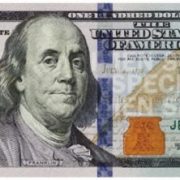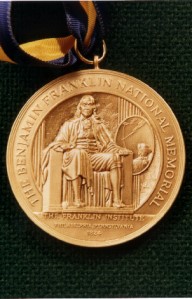Old Benjamin Franklin, one of the fathers of our country, was a pretty smart guy.
Not only was he a publisher, scientist, postmaster general, ambassador to the court of Louis the XVI, and delegate to the constitutional convention.
He also understood the basic mathematics that underlay modern investment theories centuries ahead of time.
When the United States was first founded, there was widespread belief in Europe that its experimental Republican form of government would soon fail.
After all, democracy hadn’t succeeded since the days of ancient Greece. Why should it now? The fact that the US was chronically broke didn’t help either.
One French mathematician, Charles-Joseph Mathon de la Cour, dared anyone to make a multi-century bet that the country would not survive.
Franklin happily took him up on it.
In 1789, he added to his will a codicil that endowed a trust with the city of Boston, where he was born, and the city of Philadelphia, where he built his career, with £1,000 each.
He specified that half the money be distributed in a century, and the balance in 200 years.
That initial investment equated to $5,000 at the time, or about $100,000 today in inflation-adjusted dollars. The British pound was the preeminent reserve currency of the day, and was good as gold, as it was still exchangeable into the yellow metal on demand.
Franklin died the following year days short of the age of 85.
The trust money was primarily invested in loans at a 5% interest rate in loans to young men under the age of 25 to finance apprenticeships in the trades. Later, it financed home mortgages.
So how did Ben do?
After the first 100 years, the Boston fund was worth $391,000, and half the money was eventually used to establish the Franklin Technical School, a two-year college that is still in operation today (click here for the link).
In 1990, at the end of the second century, the remaining Boston half was worth more than $5 million.
The money was promptly divvied up, with 26% going to the city, and the balance going to the State of Massachusetts. Much of the money went into the endowment of the Franklin Technical School.
Franklin did less well in his adopted hometown of Philadelphia. Corrupt politicians diverted some funds during the 19th century. Still, by 1990, the initial £1,000 had grown to $2 million.
The funds were used to set up a scholarship fund for Philadelphia high school graduates.
Interestingly, the two trusts never came close to their 200-year theoretical maximum value in the hundreds of millions of dollars. That’s because several early borrowers defaulted on their loans.
The Civil War also no doubt took its toll.
This story highlights the value of compounding interest, well known to all savvy money managers.
Every math student knows the fable of the mathematician who invented the game of chess for an ancient potentate. As a reward, he asked for a grain of rice to be doubled with each square on a chessboard. The king agreed.
The servant deserved the entire kingdom well before he reached the 64th square. The final total worked out to 18,446,744,073,709,551,615 grains of rice, or 66 trillion metric tonnes, which is 435,000 times the displacement of the Queen Mary 2.
The fairytale doesn’t tell us if the clever, mathematician ever collected his reward.
Investment legend Warren Buffett is also familiar with the concept of compounding interest. He invests only in companies with great cash flows and dividends and rarely sells.
He entered the market in 1942 when the Dow Average traded around $100, just before the tide was turned for WWII.
Timing is everything in this business.
He entitled his authorized biography “Snowball”, a reference to compounding, and a great read by the way.
Even I have my own two cents to throw in here on the compounding value of investments over the long term.
Before Morgan Stanley (MS) went public in 1986, I was allocated a part ownership of the private partnership at 25 cents a share. That is about one-third of the annualized dividend for today’s shares.
Today, they are worth $300 on a split-adjusted basis, including dividends. And since I never sold them, I never had to pay tax on the gain either.
As for how many shares I got, I’m not telling!
The original £2,000 came from Franklin’s salary for the three years he spent as the governor of Pennsylvania. He believed that the nation’s leaders should work for free and sought to set an example.
Unfortunately, it was an idea that never caught on.
The last amendment to the US Constitution, the 27th, provided for pay increases for members of Congress and was passed in 1992. It only took 203 years to ratify.
Franklin didn’t limit his charity to the Boston and Philadelphia Trusts. He also created an additional fund to award a silver medal to the most creative high school students of the day.
It is now known as the Franklin Legacy Prize Medal and is the oldest continuously funded scholarship in the country, awarded every year since 1793.
As for our friend, Charles-Joseph Mathon de la Cour, he didn’t fare so well. His head was chopped off by a guillotine only four years later during the French Revolution.
Over the 200 years in question, five different republics ruled France, which suffered through several revolutions, civil wars, and invasions.
As Warren Buffett never tires of telling fellow investors, it is a terrible idea to bet against America.
Old Ben Had a Way With Money
Franklin Legacy Prize Medal



